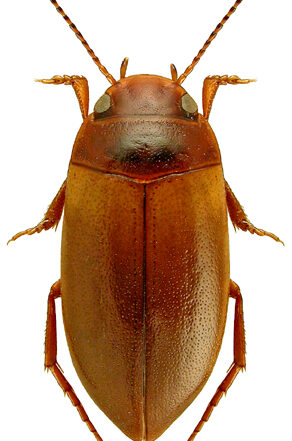
The Moss
The Moss is an important woodland situated on the eastern side of Temple Sowerby. It is wet and boggy and contains many varieties of water plants.
Members of Eden Field Club once visited the site and they found particularly fine specimens of Flag Iris, Marsh Thistle, a single plant of Pyrola Minor in flower and ample evidence of Lysteria Cordata. The Common Twayblade and a number of water plants were also found along with the waist high Horsetail and Orchids in profusion.
You will need well-fitting wellington boots when taking the footpath through The Moss, even in summer!
The Moss is now a site of Specific Scientific Interest.
“Reasons for Notification:
Temple Sowerby Moss lies in the Eden valley, 9 km north-west of Appleby and just to the east of the village of Temple Sowerby. It is a basin mire, developed in a slight depression in glacial drift over Penrith Sandstone, and notable for its development of fen communities which over almost all of the site occur beneath a cover of alder/willow carr or in wet places under the birch dominated woodland that occupies the core of the site. This cover of woodland gives the Moss a similar appearance to a number of other mosses in north and east Cumbria. However this site differs from most of these in having comparatively nutrient-rich fen communities as opposed to more acid bog or heath. Temple Sowerby Moss is also of interest for its restricted but unusual aquatic invertebrate fauna which includes a rare water beetle.
Open fen communities are restricted in extent and are largely confined to the periphery of the moss. Common reed Phragmites australis is the dominant species over some areas, whilst in others this species is to be found in mixed fen with water horsetail Equisetum fluviatile, meadowsweet Filipendula ulmaria, yellow iris Iris pseudacorus, bittersweet Solanum dulcamara, marsh pennywort Hydrocotyle vulgaris, marsh thistle Cirsium palustre, common nettle Urtica dioica and wild angelica Angelica sylvestris, and the less common species, greater spearwort Ranunculus lingua, tubular water-dropwort Oenanthe fistulosa and marsh stitchwort Stellaria palustris, as well as a number of sedges including the uncommon lesser tussock-sedge Carex diandra.
A fringe carr, dominated by alder, grey willow Salix cinerea and bay willow S. pentandra, with a ground flora similar to that of the open fen, surrounds the woodland of the centre of the moss, into which it merges. The central block of the woodland is dominated by birch and in some areas by Scots pine, these being well mixed with other species such as ash, oak, sycamore, alder and willow. The understorey includes bramble, rose, hawthorn and honeysuckle Lonicera periclymenum. It is likely that at least some of this woodland originates from planting and the moss has certainly been utilised for timber production in the past.The ground flora of the wooded area is varied, reflecting the disturbance caused by a history of peat cutting and timber production. Species recorded include many of those found in the areas of fen with others such as lesser wintergreen Pyrola minor, water avens Geum rivale, common valerian Valeriana officinalis, broad buckler fern Dryopteris dilatata and heather Calluna vulgaris which is a relic of more open conditions in the past. Although the fauna of aquatic invertebrates at Temple Sowerby Moss lacks diversity, largely as a result of the dense woodland and carr cover, it is of interest in being of a type unusual in Cumbria. It includes the water beetle Laccornis oblongus, which is a distinctly rare and local species outside its centre of population in the central border counties of Scotland.”
